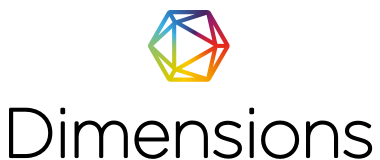Analysis of Factors That Influence Interest in Transaction Payments Using QRIS
DOI:
https://doi.org/10.33197/jabe.vol10.iss1.2024.1900Keywords:
payment technology, quick response code Indonesia standard (QRIS), SEM-PLS, unified theory of acceptance and use technologyAbstract
Quick Response Code Indonesian Standard (QRIS) is a non-cash payment method that makes transactions easier for consumers. The aim of this research is to determine the interest in using QRIS as a non-cash transaction medium. This research is descriptive research with a quantitative approach. The sample in this study was taken through convenience sampling with a total of 191 respondents. The data analysis technique uses the Structural Equation Model (SEM) using the Partial Least Square (PLS) method. The independent variables examined in this research are Performance Expectancy, Effort Expectancy, Social Influence, Facilitating Conditions and Use Behavior. The results of this research show that Performance Expectancy, Social Influence, and Facilitating Conditions have a positive influence on Behavior Intention to Use. Meanwhile, Effort Expectancy has no influence on Behavior Intention to Use.
Downloads
References
Alalwan, A. A., Dwivedi, Y. K., & Rana, N. P. (2017). Factors influencing adoption of mobile banking by Jordanian bank customers: Extending UTAUT2 with trust. International Journal of Information Management, 37(3), 99–110. https://doi.org/10.1016/j.ijinfomgt.2017.01.002
Amelia, R., & Hidayatullah, S. (2020). The Effect of Instagram Engagement to Purchase Intention and Consumers ’ Luxury Value Perception as the mediator in the Skylounge Restaurant. International Journal of Innovative Science and Research Technology, 5(4).
Andini, F., & Hariyanti, I. (2021). Penerapan Model UTAUT 2 untuk Memahami Perilaku Penggunaan OASIS di Sekolah Tinggi Teknologi Bandung. Naratif Jurnal Nasional Riset Aplikasi Dan Teknik Informatika, 3(02), 1–10. https://doi.org/10.53580/naratif.v3i02.127
Andre, G. V., Baptista, P. T., & Setiowati, R. (2019). The Determinants Factors of Mobile Payment Adoption in DKI Jakarta. Journal of Research in Marketing, 823–831.
Bank Indonesia. (n.d.-a). QR Code Indonesian Standard (QRIS). Retrieved February 27, 2024, from Bank Indonesia website: https://www.bi.go.id/id/edukasi/Documents/Bahan-Sosialisasi-QRIS.pdf
Bank Indonesia. (n.d.-b). Sistem Pembayaran & Pengelolaan Uang Rupiah. Retrieved February 27, 2024, from Bank Indonesia website: https://www.bi.go.id/QRIS/default.aspx
Bina Nusantara. (n.d.). Perkembangan Financial Technology di Indonesia. Retrieved February 27, 2024, from Bina Nusantara website: https://accounting.binus.ac.id/2020/07/02/perkembangan-financial-technology-di-indonesia/
Febriani, N. K. D., Utami, N. W., & Putri, I. G. A. P. D. (2023). Analisis Behavioral Intention dan Use Behavior Quick Response Code Indonesian Standard (QRIS) Pada UMKM Dengan Metode UTAUT 2 di Kota Denpasar. Jurnal Ilmiah Teknologi Informasi Asia, 17(8).
Ferghyna, F., Rachmadi, A., & Herlambang, A. D. (2020). Pengaruh Facilitating Conditions dan Behavioral Intention terhadap Use Behavior pada Pengguna Aplikasi BNI Mobile Banking. Jurnal Pengembangan Teknologi Informasi Dan Ilmu Komputer, 4(9).
Gultom, M. S., & Safitry, N. (2021). Analisis Pengaruh Persepsi Kemanfaatan, Persepsi Kemudahan Penggunaan, dan Kepercayaan terhadap Minat Menggunakan Alat Pembayaran Non Tunai dengan JAKONE Mobile. Ekonomi Islam, 12(2), 241–261. https://doi.org/10.22236/jei.v12i2.7950
Gupta, A., Dogra, N., & George, B. (2018). What determines tourist adoption of smartphone apps? Journal of Hospitality and Tourism Technology, 9(1), 50–64. https://doi.org/10.1108/JHTT-02-2017-0013
Gusni, G., Hurriyati, R., & Dirgantari, P. D. (2020). Pengaruh Perceived Usefulness dan Perceived Ease of Use terhadap Attitude dan Actual Usage Go-Pay. JURNAL MANAJEMEN DAN KEWIRAUSAHAAN, 8(1). https://doi.org/10.26905/jmdk.v8i1.3892
Hair, Jr. , J. F., Hult, G. T. M., Ringle, C. M., & Sarstedt, M. (2022). A Primer on Partial Least Squares Structural Equation Modeling (PLS-SEM) (3rd ed.). Thousand Oaks: Sage.
Mayanti, R. (2020). Faktor-faktor yang Mempengaruhi Penerimaan User terhadap Penerapan Quick Response Indonesia Standard sebagai Teknologi Pembayaran pada Dompet Digital. Jurnal Ilmiah Ekonomi Bisnis, 25(2), 123–135.https://doi.org/10.35760/eb.2020.v25i2.2413
Mufingatun, M., & Prijanto, B. (2020). Analysis of Factors Affecting Adoption of Mobile Banking Application in Indonesia. Jurnal Bisnis Dan Manajemen, 10(1).
Musyaffi, A. M., & Kayati, K. (2020). Dampak Kemudahan dan Risiko Sistem Pembayaran QR Code: Technology Acceptance Model (TAM) Extension. Jurnal Inspirasi Bisnis Dan Manajemen, 3(2), 161. https://doi.org/10.33603/jibm.v3i2.2635
Novi Arianti, N. L., Sri Darma, G., Fredy Maradona, A., & Mahyuni, L. P. (2019). Menakar Keraguan Penggunaan QR Code Dalam Transaksi Bisnis. Jurnal Manajemen Bisnis, 16(2), 67. https://doi.org/10.38043/jmb.v16i2.2041
R., Made Karmawan, G., . S., Fernandoand, Y., & Gui, A. (2019). QR Code Payment in Indonesia and Its Application on Mobile Banking. KnE Social Sciences. https://doi.org/10.18502/kss.v3i22.5073
R., & Nurkhin, A. (2020). Analysis of Factors Affecting Behavioral Intention to Use E-Learning Uses the Unified Theory of Acceptance and Use of Technology Approach. KnE Social Sciences. https://doi.org/10.18502/kss.v4i6.6658
Soviah, S. (2019). Analisa pengaruh performance expectancy, Effort Expectancy, Social Influence, dan Facilitating Condition terhadap Intensitas Penggunaan Layanan QR Code Sister For Student (SFS) Universitas Jember. Universitas Jember.
Taiwo, A. A., & Downe, A. G. (2013). The theory of user acceptance and use of technology (UTAUT): a meta-analytic review of empirical findings. Journal of Theoretical and Applied Information Technology, 49(1), 48–58.
Venkatesh, Morris, Davis, & Davis. (2003). User Acceptance of Information Technology: Toward a Unified View. MIS Quarterly, 27(3), 425. https://doi.org/10.2307/300365401
Downloads
Published
How to Cite
Issue
Section
License
Copyright (c) 2024 Tri Ayu Astari, Nuraini Sari, Oliver Hasan

This work is licensed under a Creative Commons Attribution-NonCommercial-ShareAlike 4.0 International License.
Submission of a manuscript implies that the submitted work has not been published before (except as part of a thesis or report, or abstract); that it is not under consideration for publication elsewhere; that its publication has been approved by all co-authors. If and when the manuscript is accepted for publication, the author(s) still hold the copyright and retain publishing rights without restrictions. Authors or others are allowed to multiply the article as long as not for commercial purposes. For the new invention, authors are suggested to manage its patent before published. The license type is CC-BY-SA 4.0.












